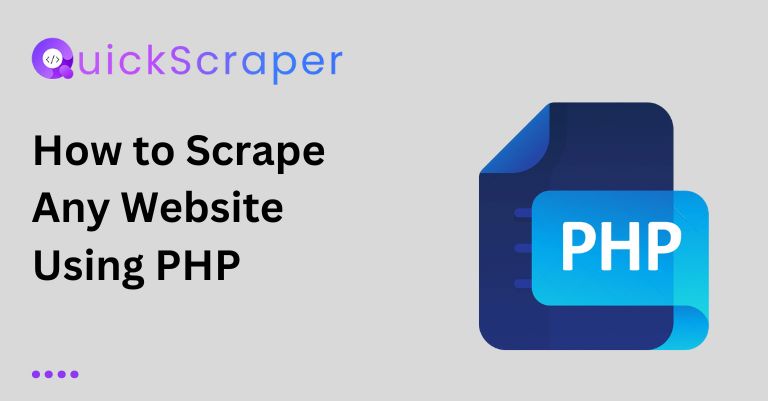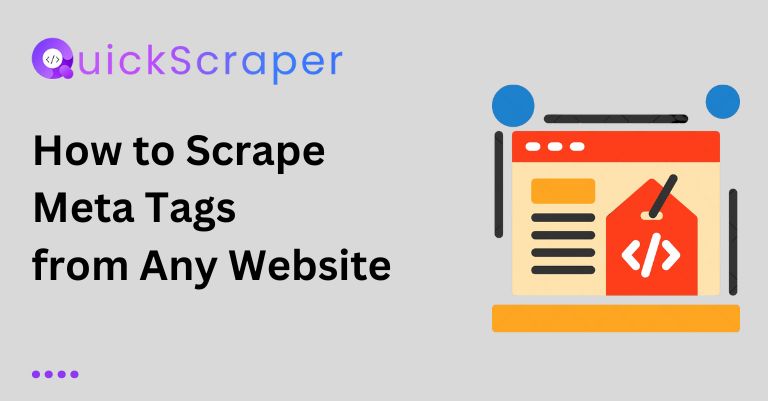
How to Scrape Any Website Using PHP
How to Scrape Any Website Using PHP Do you hate manually copying and pasting data from websites? With web scraping, you can automate the process

A job portal that’s comprehensive and up-to-date can make a huge difference in today’s competitive job market. Building your own job portal by scraping job sites can provide you with a centralized platform tailored to your specific needs and preferences, unlike numerous job sites available on the internet.
Data is scraped from websites programmatically using web scraping. You can scrape job sites to gather job listings, company information, job descriptions, location details, salary ranges, and other relevant data, and store it in a structured format.
Here’s how to scrape job sites using Python and its powerful web scraping libraries to build your own job portal. We’ll cover everything from setting up the environment to extracting and storing the data, and finally, building a user-friendly web application to display the job listings.
Before we dive into the coding part, make sure you have the following prerequisites installed:
You can install these libraries using pip, Python’s package installer:
pip install beautifulsoup4 requests scrapyThe first step is to identify the job sites you want to scrape. Some popular options include Indeed, Monster, Glassdoor, LinkedIn, and job boards specific to your industry or location. It’s a good idea to diversify your sources to ensure you have a comprehensive pool of job listings.
Keep in mind that some sites may have measures in place to prevent web scraping, such as IP blocking, rate limiting, or captcha challenges. It’s essential to review their terms of service and robots.txt file before proceeding to ensure you’re not violating any rules or regulations.
Once you’ve chosen your target job sites, you’ll need to fetch the HTML content of the job listing pages. This can be done using the requests library in Python.
import requests
access_token = '6JQrJqjVwEZ7EN584yap' #access_token = Get you access token from app.quickscraper.co
url = f"<https://api.quickscraper.co/parse?access_token={access_token}&url=https://www.linkedin.com/jobs/search?keywords=Account-Manager&location=Germany&position=1&pageNum=0/>"
response = requests.get(url)
html_content = response.contentIn this example, we’re sending a GET request to the URL https://www.example.com/jobs and storing the HTML content in the html_content variable.
If you encounter any issues with IP blocking or rate limiting, you may need to implement techniques like rotating proxies, adding delays between requests, or using the Scrapy framework, which provides built-in mechanisms for handling these challenges.
After fetching the HTML content, you’ll need to parse it to extract the relevant data. This is where the BeautifulSoup library comes into play.
from bs4 import BeautifulSoup
soup = BeautifulSoup(html_content, "html.parser")Here, we’re creating a BeautifulSoup object by passing the HTML content and specifying the parser to use ("html.parser" in this case).
With the BeautifulSoup object, you can navigate through the HTML structure and extract the desired data. The specific code will depend on the structure of the job listing pages you’re scraping, but here’s an example of how you might extract job titles, company names, job descriptions, locations, and salary ranges:
job_listings = []
jobs = soup.find_all('div', {'class': 'job-search-card'})
for job_element in jobs:
title = job_element.find('h3', {'class': 'base-search-card__title'}).text.strip() if job_element.find('h3', {'class': 'base-search-card__title'}) else None
company = job_element.find('h4', {'class': 'base-search-card__subtitle'}).text.strip() if job_element.find('h4', {'class': 'base-search-card__subtitle'}) else None
url_element = job_element.find('a', {'class': 'base-card__full-link'})
url = url_element.get('href') if url_element else None
location = job_element.find('span', {'class': 'job-search-card__location'}).text.strip() if job_element.find('span', {'class': 'job-search-card__location'}) else None
job_listing = {
"title": title,
"company": company,
"location": location,
"url": url,
}
job_listings.append(job_listing)In this example, we’re using the find_all method to locate all the HTML elements containing job listings (assuming they have a specific class or structure). Then, for each job listing element, we extract the job title, company name, job description, location, and salary range using the appropriate HTML tags and classes.
You may need to adjust this code based on the specific HTML structure of the job sites you’re scraping. Tools like browser developer tools or browser extensions like “SelectorGadget” can be helpful in identifying the relevant HTML elements and their attributes.
After extracting the job listing data, you’ll need to store it in a structured format for easy access and analysis. There are several options available, each with its own advantages and disadvantages:
Here’s an example of how you might store the job listing data in a JSON file:
import json
with open("job_listings.json", "w") as file:
json.dump(job_listings, file, indent=4)
This code creates a new file called job_listings.json and writes the job listing data to it in JSON format.
With the job listing data stored in a structured format, you can now build your job portal. This could involve creating a web application using a framework like Flask, Django, or FastAPI, or a static website using HTML, CSS, and JavaScript.
Here’s an example of how you might display the job listings on a Flask web application:
from flask import Flask, render_template
import json
app = Flask(__name__, template_folder='templates')
@app.route("/")
def home():
with open("job_listings.json", "r") as file:
job_listings = json.load(file)
return render_template("index.html", job_listings=job_listings)
if __name__ == "__main__":
app.run(debug=True)
In this example, we’re loading the job listing data from the job_listings.json file and passing it to the index.html template, which can then be rendered to display the job listings on the web page.
Your job portal can incorporate various features to enhance the user experience, such as:
While this blog post provides a comprehensive overview of how to build your own job portal by scraping job sites, there are a few additional considerations to keep in mind:
Building your own job portal by scraping job sites can be a powerful tool in your job search arsenal. By following the steps outlined in this blog post and considering the additional factors mentioned, you can create a comprehensive and up-to-date job portal tailored to your specific needs and preferences, while providing a great user experience and staying compliant with legal and ethical guidelines.

How to Scrape Any Website Using PHP Do you hate manually copying and pasting data from websites? With web scraping, you can automate the process

How to Scrape Meta Tags from Any Website Meta tags are snippets of text that describe a website’s content, and search engines use them to

How to Scrape Images from Any Website Scraping images from websites can be a useful technique for various purposes, such as creating image datasets, backing

How to Scrape a Website Without Getting Blocked: A Developer’s Guide Web scraping, as a powerful tool, is beneficial for developers, giving them the power

How To Scrape Yelp Data using Python Web scraping is the process of extracting data from websites automatically. In this blog post, we’ll learn

How to Scrape Stock Prices Every Day using Python In this blog post, we will learn how to scrape stock prices from a financial website
By clicking “Accept”, you agree Quickscraper can store cookies on your device and disclose information in accordance with our Cookie Policy. For more information, Contact us.